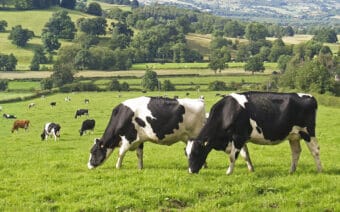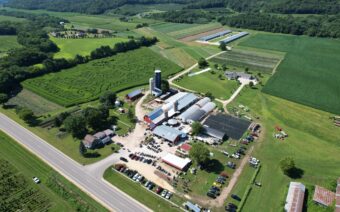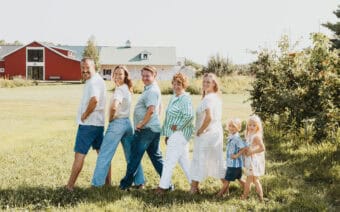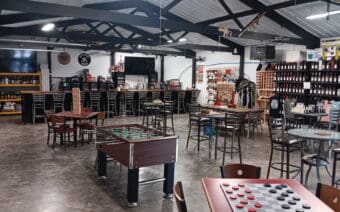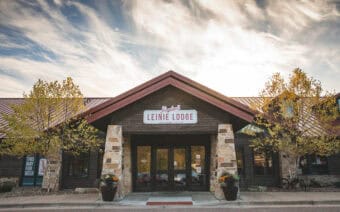
April 28, 2025
DE SOTO – William Walleser said he can’t fathom having a dairy farm that isn’t rooted in sustainability because the goal of family farms is to sustain for the next generation.
“Sustainability and profitability have to exist side by side in our business or it won’t exist longer than one or two generations,” Walleser, a partner in Wall-Stone Holsteins and owner of Double W Farms, said. “Agriculture is a sustainably-driven business, and if we don’t make things better and leave it better than we found it, then we’ve missed a step.”
Walleser said sustainability in agriculture takes many different forms – all of which allow the production of crops or livestock without damage to humans or natural systems.
This, he said, includes a mindfulness of how practices affect the soil, water, biodiversity, surrounding or downstream resources and beyond.
Walleser said the practice takes into account providing resources for the people of today while simultaneously conserving the planet’s ability to sustain future generations.
Doing more with less
Walleser said for him, sustainability is about using fewer resources to produce more food, while simultaneously protecting and improving their land in the Driftless Region.
“The simplest definition is making or creating more (by) using less,” he said. “No matter what product you’re talking about, that definition applies.”
Today, Walleser said Wall-Stone Holsteins is a 1,400-cow dairy farm that also farms 2,000 acres within about a five-mile spread of the farm.
Growing up on a slightly smaller-scale version of the farmstead, third-generation farmer Walleser said he was exposed to many sustainable practices the family farm embraced from the beginning.
He said his paternal grandparents moved onto the property in 1961, the year his dad was born, and established a small dairy farm that also raised pigs, ducks and chickens on the original 450-acre plot.
By the time he was a freshman at a college preparatory high school in La Crosse, Walleser said he knew he wanted to farm – crediting his education with broadening his horizons to include people without any agricultural knowledge or experience.
That said, Walleser said it also exposed him to people who valued sustainable practices even if they didn’t fully grasp agricultural operations.
“What’s interesting is how people who don’t have that experience can really value sustainability at a level that doesn’t register with most farmers,” he said. “At the end of the day, they’re consumers of our product, and we need to understand some of their wants and needs. We have to step up and do some (sustainable) things because we’re making a product that’s a for-sale item.”
Walleser said co-ops and milk processors have come a long way in bridging the gap between the farm and the consumer.
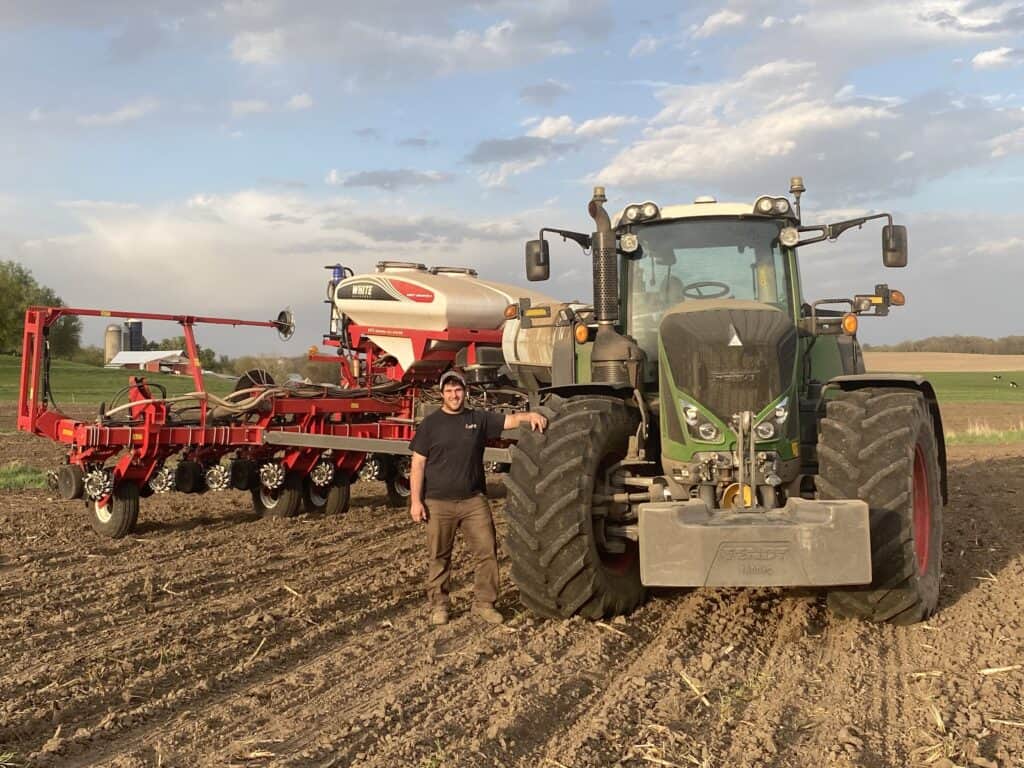
The tanks of milk that leave the farmstead, he said, may remain milk but may also be processed into other items on families’ tables, including cheese, butter or yogurt.
“And in doing so, those consumers are eating and believe in the mission of the farmer who made it,” he said. “They want to feel good about it when they eat it and know it comes from someone who cares about the same things.”
Holsteins at the heart of operations
Walleser said Wall-Stone Holsteins sells its milk to a large daily cooperative, shipping two to three loads of milk a day to different plants to become milk, yogurt, cheese and butter.
Each tanker, he said, holds upward of 51,000 pounds of milk.
It’s a daily activity that Walleser said he is integrally involved with these days, and one he performs with the dual benefits of hands-on experience and a college education.
He said it was his mom who encouraged him to pursue a college education, with Walleser earning a bachelor’s degree in dairy science and a certificate in agriculture business management in just three years at the University of Wisconsin-Madison.
Walleser said his goal was to return to the family farm and apply his education alongside what he had learned from his parents’ guidance.
He said he did just that, and ultimately became a partner in the operation about five years ago.
“I like that you get to work with both your hands and your head, as you get a mix of that in farming,” he said.
Walleser said much of his focus on the farm is rooted in labor management and parlor management, but that extends to crops as well.
He said he has always enjoyed seeing things grow, though the farm’s purpose for growing crops is to feed the herd – the heart of the farm’s operation.
“I wouldn’t be much of a grain farmer, though I love growing crops, but only if I get to feed them to a cow,” he said. “Cows are the reason I am here, and we really target the longevity of the cows. The biggest sustainable reason for our business is to take care of the cow, as she gives us back everything we give her and then some. We wouldn’t be here if it weren’t for our cows, and it’s a joy to take care of them. They call them the foster mothers of the world for a reason.”
Walleser said the 50-stall DeLaval rotary parlor the farm began using when it moved into a new structure in January 2024 also has its place in the farm’s sustainability efforts.
The 50-stall rotary, he said, is significantly faster than the previous two 12-stalls that were parallel to each other.
In addition, it also honors cows’ natural movements and physiology.
“In the old parlor, we could milk about 125 cows per hour, and we’re around 300 an hour in this new parlor,” he said. “And it does so using less power in our new parlor than with our older one.”
Walleser said the efficiency of the parlor provides some downtime for the cows – which in turn allows employees to focus on other activities as partners in the farm’s sustainability efforts.
Caring for the cows, he said, is more than the right thing to do – it’s also a great business move that is rooted in sustainable practices.
Walleser said the parlor system includes behavioral analysis capabilities in the cows’ ear tags that alert the team to potential issues with the cows (health and welfare) in addition to generating milk data and other animal productivity measures.
“AI conglomerates behavior and lets us know when cows are sick or need to be checked on, and it lets us take even better care of the cows we have,” he said. “It’s far more (perceptive) than what we can see with a naked eye and takes the human factor out of it, sensing changes before we can see it with our eyes.”
Walleser said he is a big proponent of taking care of the cows and giving them a better life – whether that’s investing in fans or soaking technology in the holding area to keep the cows cool in the summer and a little warmer during Wisconsin winters.
“We invest a lot in infrastructure in the facilities, and they do use their share of power that we try to nullify by using variable speed drives on the fans, computer/temperature-controlled fan speed, LED lighting and other elements,” he said.
Taking care of the cows for the long haul, Walleser said, is in everyone’s best interests.
The last lactations from a cow, he said, are the most profitable – noting that cows not only produce more milk as they get older, but it’s also a higher-fat milk, making it more profitable to keep the cows healthy long-term.
“Behind feed, the second-highest cost is net herd replacement – the cost of a cow leaving the herd and being replaced by a new heifer,” he said. “It is both sustainable and profitable to keep cows in the herd longer.”
Sustainable practices for the rolling land
Walleser said the rolling hills and steep slopes on his homestead can make farming challenging.
In order to make the best use of the land, he said his family has performed contour farming since 1961 and also instituted strip farming – which follows a 90-foot strip of corn with a 90-foot strip of alfalfa, with the alfalfa playing the role of reducing soil erosion.
“We have practices like these in place that we have continued to build on and use,” he said.
Walleser said they also practice some no-till farming.
In the past 10 years, he said they have started growing cover crops – including a lot of rye – behind the corn silage to keep topsoil where it belongs on the hills.
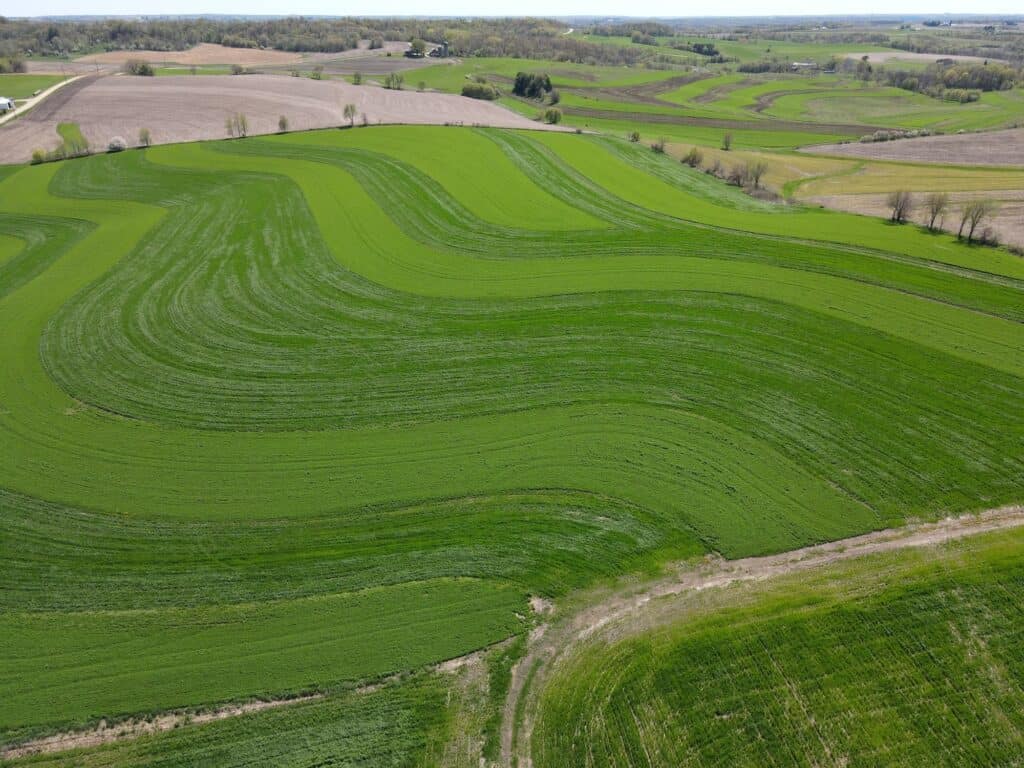
“We like to have the land here green and growing as many days of the year as possible,” he said.
The use of no-till or low-disturbance manure injection, Walleser said, plays an important part, too, as placing the manure into the soil helps to prevent it from running away when it rains.
That is balanced, he said, with the desire not to till the soil completely, and is aided by having a choice as to when to inject manure.
Unlike many farms, Walleser said they have manure storage on the farm that can accommodate at least 210 days of manure.
“We don’t have to spread when conditions aren’t adequate,” he said. “That’s huge not to spread when the weather is bad.”
Walleser said that’s complemented by a focused nutrient management plan that exists for every acre on the farm – which includes monitoring all fertilizer and manure applications, as well as calculating soil loss.
Optimized fertilizer levels, he said, allow for the best crops to be grown.
‘“Anytime we can take care of the soil – especially preserving the top six inches that are more nutrient-rich and can grow the best crops – the better we are,” he said. “It’s about taking care of what is there.”
‘35 Under 35’ recognition
Walleser said his focus on sustainability on and off the farm has garnered the attention of the Wisconsin Farm Bureau Federation’s “35 Under 35” Awards, through which he was nominated recently for achievement in the Sustainable Environment category.
According to the bureau’s website (wfbf.com), the program “recognizes the creativity and innovation of young farmers and agriculturalists who are preserving agriculture through leadership in environmental, social and economic practices.”
Walleser said the Sustainable Environment category identifies leaders who practice sustainability on their own farms but, even more importantly, teach and share with others as well.
“Sustainability can be so different on different farms, but the award really looks at practices that stand out and go above and beyond,” he said. “There are a lot of practices that almost everyone uses to some degree now – such as recycling water – but it’s about taking things to another level.”
Benefiting the broader watershed
Over the past year, Walleser said he has done what he can to support the Hill Country Watershed Alliance – a 501(c)(3) nonprofit organization whose mission is to continue conservation leadership by improving and restoring soil, water and air as stewards of the Coon Creek Watershed.
Walleser said he helped bring four local watersheds together to create the one alliance as both a founding member and treasurer.
The group, he said, has a board and is intended to serve as a fiscal agent and provide the means for collaboration among the watershed councils on staffing, grant writing, education and recruitment of new councils and new members.
“My goal was to play a small part in getting it off the ground and running – bringing the right people together,” he said. “We can share best practices, opportunities for grants and other funding and more for the (communal benefit) of this region.”
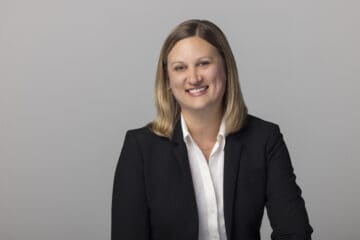 Sarah Knutson named managing partner at McCarty Law LLP
Sarah Knutson named managing partner at McCarty Law LLP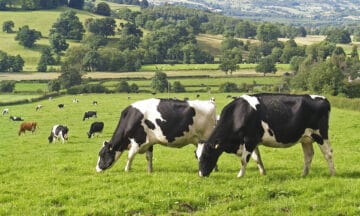 Westby Creamery announces $14 million expansion
Westby Creamery announces $14 million expansion


